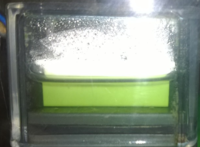Hi Folks,
Does anyone use (or tried) the JBL Direct CO2 test kit? I am referring to the following:
https://www.jbl.de/en/products/detail/6449
I decided to try this kit as it gives an instant (well, 5 minutes) measurement of dissolved CO2. I thought it was worth a try as I get frustrated waiting for my DC to change to lime green. The test kit is of the colorimetric type - in other words, colour matching with a control tank water sample. But, like all such tests, it's open to interpretation. Consequently, I'm never sure if I underestimate or overestimate the correct reading.
Has anyone else tried this kit?
JPC
Does anyone use (or tried) the JBL Direct CO2 test kit? I am referring to the following:
https://www.jbl.de/en/products/detail/6449
I decided to try this kit as it gives an instant (well, 5 minutes) measurement of dissolved CO2. I thought it was worth a try as I get frustrated waiting for my DC to change to lime green. The test kit is of the colorimetric type - in other words, colour matching with a control tank water sample. But, like all such tests, it's open to interpretation. Consequently, I'm never sure if I underestimate or overestimate the correct reading.
Has anyone else tried this kit?
JPC




